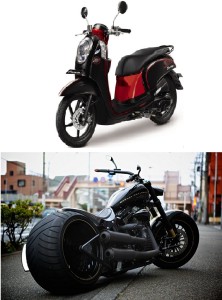Thanks to Jennie Wong, for sharing this week’s interview of “Ask The Mompreneur” with Jaun Garzon, a marketing strategist. In her recent article “What is your firm’s branding strategy?” She discussed what the brand is and what is branding strategy? As explained by Mr.Jaun Garzon in an interview.
To help entrepreneurs and small businesses better understand the core of their brand and branding strategies, I use a system I developed called the 4 P’s of Branding. It boils down this hidden part of your brand into 4 aspects: your purpose, your promise, your personality and your positioning. By asking yourself these questions (in this order), you’ll be well on your way to understanding what your brand is all about.
Purpose:
Why does your company, whether you are 1 or 100 employees, exist? Why do you get up every morning and do what you do? Why did you start this business to begin with? Your purpose is about connecting your business to its “Why?” and ensuring that the branding decisions you make support because doing what you do, including putting it out for the world to see. For example, Southwest Airlines states their purpose right on their website, “To connect people to what’s important in their lives through friendly, reliable and low-cost air travel.” Whatever that reason is for you, that’s the foundation of your brand.
Promise:
It is imperative to know your target market and communicate such things you guarantee always to do for them (in your promotions, social awareness, sales brochures, etc.). Such guarantee may include pace, quality, attention to detail or any high-level benefit you can constantly offer. The goal is, customers should realize that if they opt to work with your company, you will stick to certain promises and can do everything to make it achievable. This promise is ultimately responsible for brand reputation.
Personality:
Brand personality depicts the personality of users consuming it. Brand personality can be feminine or masculine. For example, to get you the meaning of different brand personalities, think about two different motorcycle brands, Honda and Harley Davidson. You would unlikely to confuse the two, even though they both are motorcycle brands. Honda bikes are mostly used by low-mid income class individuals or young small families. It reflects affordability and fuel-efficient features. While, Harley Davidson is usually own by well off individuals who are never worried about fuel-efficiency and affordable cost. What most matters for Harley user are uniqueness, prestige and competition from peers.
Positioning:
Your customers are might be aware of products or services you are selling, but not necessarily aware of why particular product or service is valuable for them or how certain offering may add value in their lifestyle. Here brand positioning strategy works to divide the market into segment and sub-segments. You have to clearly define your brand through advertising and promotional efforts. For instance, Volvo and Mercedes are both higher-end cars, but Mercedes is all about prestige and quality whereas Volvo has positioned its brand as the safest cars in the world.
There are numerous strategies floating in the market to make your product a BRAND, but these 4 simple P’s of branding strategy could help you define the scope and purpose of your brand. If there is any anonymity between your brand and 4 P’s then you must to revamp your strategies.
“Why Does Your Brand Exist? The 4 P’s Test for branding strategy

No comments:
Post a Comment